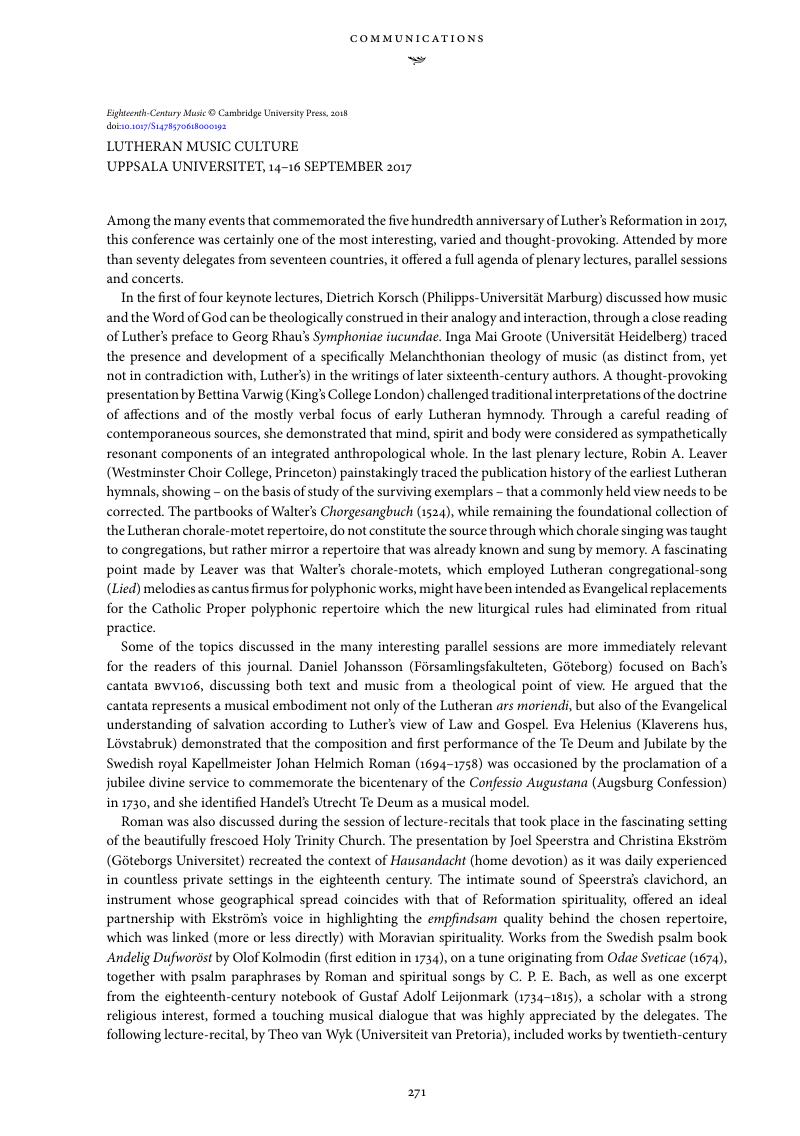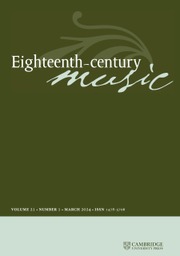No CrossRef data available.
Article contents
LUTHERAN MUSIC CULTURE UPPSALA UNIVERSITET, 14–16 SEPTEMBER 2017
Published online by Cambridge University Press: 02 October 2018
Abstract
An abstract is not available for this content so a preview has been provided. Please use the Get access link above for information on how to access this content.

- Type
- Communications: Conference Reports
- Information
- Copyright
- Copyright © Cambridge University Press 2018


